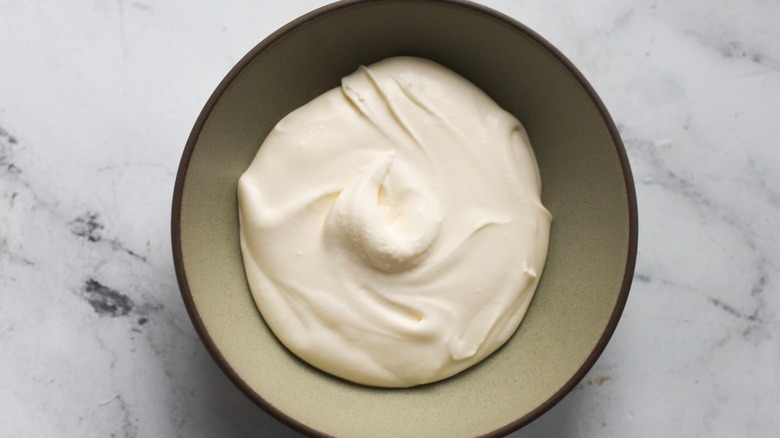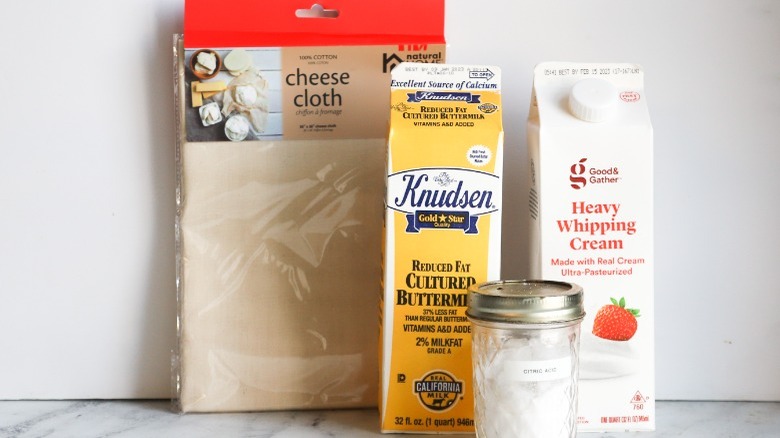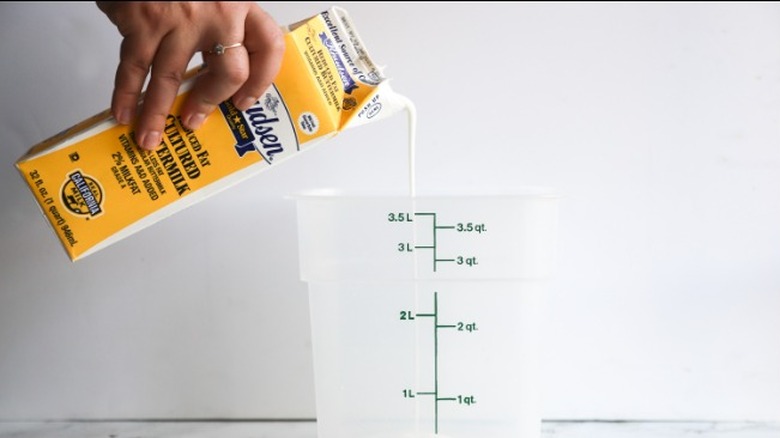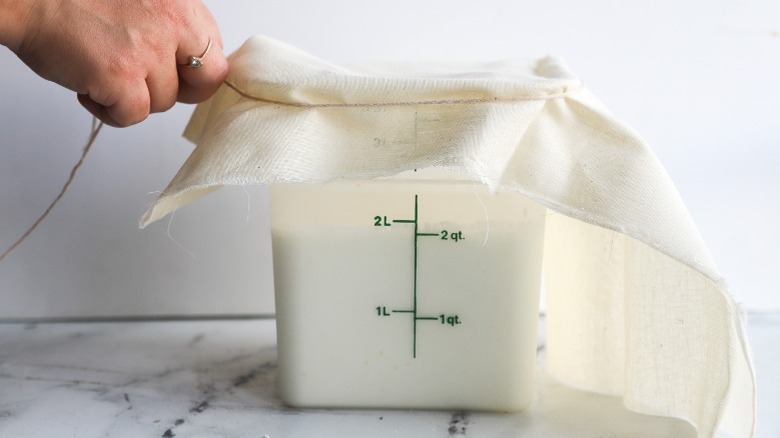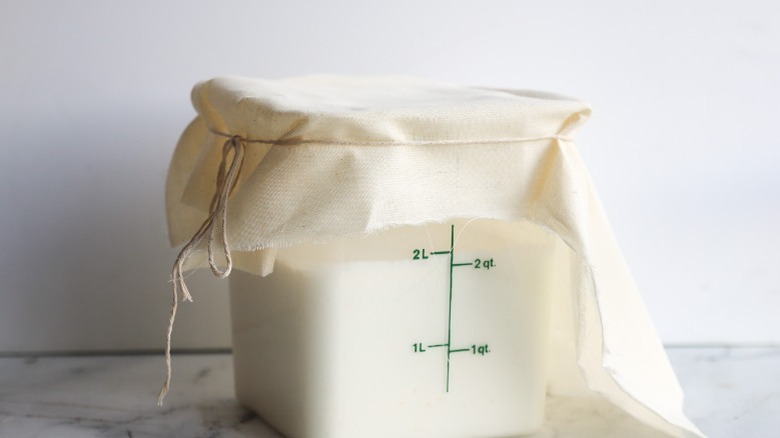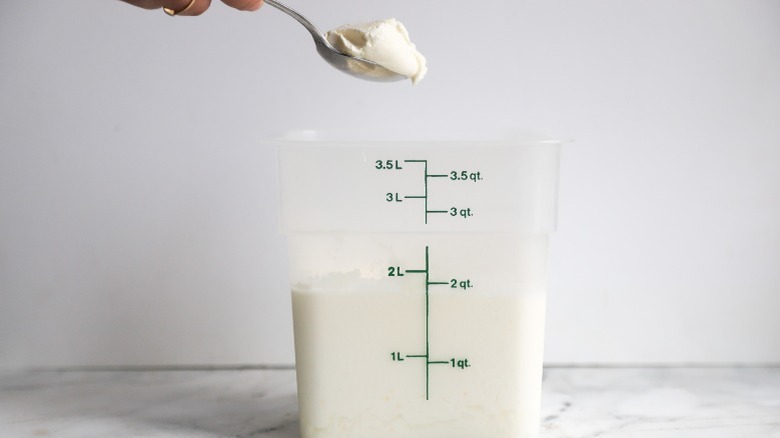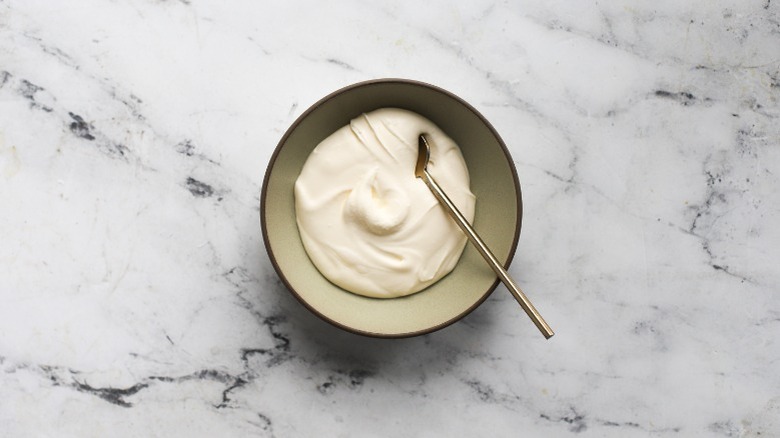Homemade Crème Fraîche Recipe
Crème fraîche is the creamy French predecessor to sour cream (though there are so many differences), and you'll find it popping up in recipes here and there because it adds a deliciously rich and tangy flavor to anything it touches. The culinary uses for crème fraîche are vast, from using it to thicken a soup to adding a tangy note to potatoes. Of course, there is always the classic caviar service of blinis, chives, shallots, and crème fraîche, if you roll like that.
The only problem? Crème fraîche can be tricky to find in the United States. But while it might seem out of your reach, the truth is that crème fraîche is much easier to make than you might think. Just two ingredients and a bit of time separate you from the creamy, rich goodness that is this decadent ingredient. We've got the lowdown on this simple technique from recipe developer Taylor Murray, who uses crème fraîche for chocolate cake, ice cream, and more.
Gather the ingredients for homemade crème fraîche
The ingredients for crème fraîche are simple, yet very particular. First, you will need to get buttermilk. Most buttermilk sold commercially in the United States is made from low or reduced fat milk, which is then cultured (according to the California Dairy Board). This is perfectly fine to make this recipe with. Next, find some heavy whipping cream. Ideally, go for regular pasteurized instead of ultra-pasteurized. Since ultra-pasteurized is easier to find, we developed this recipe to work with that, though you will find better results in less time with the less-pasteurized stuff.
Lastly, you will need some citric acid — a product that helps dairy products coagulate and is often used in cheese-making. While this ingredient isn't strictly necessary (and you can omit if need be), it does help the process along.
In addition to the ingredients, you'll have to find some plain cheesecloth to protect the crème fraîche from unwanted environmental intruders (like dust).
Create the crème fraîche mixture
Pour all of the buttermilk and all of the heavy cream into a clean, sanitized container. We chose to make this mixture in this quantity (you'll end up with half a gallon) for the sake of demonstration, but you can easily halve or quarter the recipe. Both buttermilk and cream are often sold in pint containers, which leaves you without waste.
Add your pinch of citric acid and give it a good stir. Make sure that anything that touches the mixture is completely clean and sanitized to avoid introducing harmful bacteria.
Cover the mixture and let it rest
Use the cheesecloth and a large rubber band or a bit of kitchen twine to secure it on. Find a cool, dry place to store the crème fraîche that is away from anything that might cause the temperature to fluctuate, such as a drafty window or a heating vent. Let the mixture sit there for about 12 hours, during which time it will thicken into the texture we're looking for. The ideal temperature is between 70 and 75 F; if it is placed in an area hotter or colder than this, the time to desired thickness can vary from our estimation.
Refrigerate before using
Once the mixture has thickened at room temperature, you must move it to the refrigerator for 24 hours before using. The final thickening happens at this stage, so it shouldn't be skipped.
Assess the consistency
After the mixture has rested in the refrigerator, it's time to test it. It should now be the consistency of a thick yogurt, or even softened cream cheese. If you notice anything off — such as spots of color on the surface or a very bad smell — discard the whole thing. No worries, though — just try again and be super sure to sanitize your equipment!
Crème fraîche troubleshooting
Even though this process is simple, there are a few nuances to working with cultured foods that will help you be successful. If your mixture separates, it was likely kept at a too-high temperature too long. It is perfectly fine to eat and you can either pour off the liquid whey from the bottom or mix it all back together. If mold formed on the surface, the most common culprit is non-sterilized components. You should discard the mixture immediately and start over (don't worry — you'll get the hang of it!).
If you find yourself without enough buttermilk to do a 50/50 ratio, it is perfectly alright to inoculate the culture with just a few tablespoons of buttermilk. Just keep in mind that the process may take longer.
Homemade Crème Fraîche Recipe
Crème fraîche adds a deliciously rich and tangy flavor to anything it touches, from eggs to cakes to potatoes. Here's how to make the French spread at home.
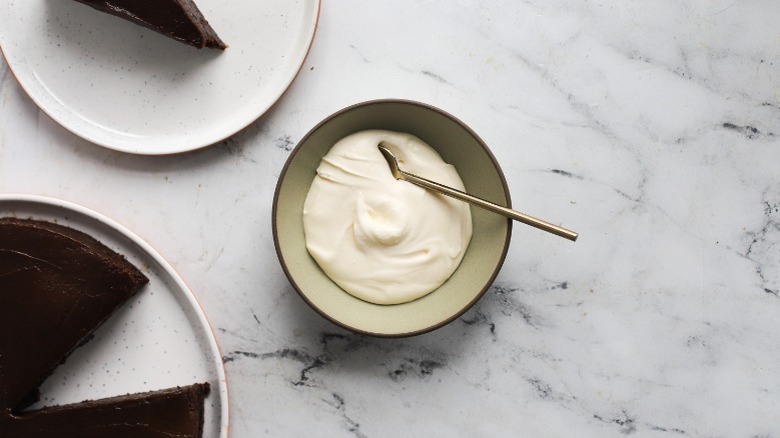
Ingredients
- 1 quart cultured buttermilk
- 1 quart heavy cream
- 1 pinch citric acid
Directions
- In a clean, sanitized container, combine buttermilk and cream. Add citric acid and stir once.
- Cover container tightly with cheesecloth and fasten with a rubber band or twine.
- Set aside at room temperature (70-75 F) for 12 hours, or until mixture reaches desired thickness.
- Refrigerate for 24 hours before using.
Nutrition
| Calories per Serving | 184 |
| Total Fat | 18.1 g |
| Saturated Fat | 11.3 g |
| Trans Fat | 0.0 |
| Cholesterol | 67.3 mg |
| Total Carbohydrates | 3.7 g |
| Dietary Fiber | 0.0 g |
| Total Sugars | 3.7 g |
| Sodium | 111.2 mg |
| Protein | 2.6 g |
